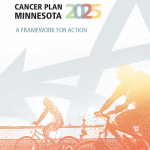 The number of cancer treatment options has significantly increased over the past two decades leading to improvements in patient outcomes in many malignancy types (1). These advancements, however, have come with a high cost and cancer is now the second most expensive disease in the United States, after heart disease, with an annual estimated cost of $124 billion dollars in 2010 and a projected rise to $157 billion dollars in 2020, a 27% increase (2). As the cost of cancer diagnostics and therapeutics escalate, financial concerns of patients and families, physicians, health systems, and payers are increasingly common (3, 4). Little is known about the impact of cancer treatment costs on an individual patient, but it has been increasingly the focus of study. Previous reports demonstrate that cancer patients are at particular risk for financial burden when compared to persons without cancer (5). In a study from the National Health Interview Survey (NHIS), increased financial burden as a result of cancer care costs was the strongest independent predictor of poor quality of life among cancer survivors.
The number of cancer treatment options has significantly increased over the past two decades leading to improvements in patient outcomes in many malignancy types (1). These advancements, however, have come with a high cost and cancer is now the second most expensive disease in the United States, after heart disease, with an annual estimated cost of $124 billion dollars in 2010 and a projected rise to $157 billion dollars in 2020, a 27% increase (2). As the cost of cancer diagnostics and therapeutics escalate, financial concerns of patients and families, physicians, health systems, and payers are increasingly common (3, 4). Little is known about the impact of cancer treatment costs on an individual patient, but it has been increasingly the focus of study. Previous reports demonstrate that cancer patients are at particular risk for financial burden when compared to persons without cancer (5). In a study from the National Health Interview Survey (NHIS), increased financial burden as a result of cancer care costs was the strongest independent predictor of poor quality of life among cancer survivors.
Metro-Minnesota Community Oncology Research Consortium (MMCORC) just opened its second national clinical trial addressing Cancer Plan MN Objective 8 to reduce financial and legal burdens on cancer patients. The study is called Financial Burden Assessment in Patients with Stage I-III Colon or Rectal Cancer Undergoing Treatment (Sheetal), view clinicaltrials.gov link to learn more. The cost of cancer treatment has risen over the last decade. This study is looking at how often patients with a diagnosis of colon or rectal cancer have financial problems, using questionnaires that ask questions about finances, employment, and quality of life.
This study is open to enrollment at all MMCORC sites; to find the site partner near you, look to the MMCORC website under Locations & Physicians, here.
This type of research is part of a broader portfolio the National Cancer Institute (NCI) has launched called Cancer Care Delivery Research (CCDR). Check out the local CCDR Bulletin, and here is a brief video to learn more about CCDR in the NCI Community Oncology Research Program (NCORP). https://youtu.be/rh7ZG9ghpvg
- Zeng C, Wen W, Morgans AK, et al. Disparities by Race, Age, and Sex in the Improvement of Survival for Major Cancers: Results From the National Cancer Institute Surveillance, Epidemiology, and End Results (SEER) Program in the United States, 1990 to 2010. JAMA Oncol. 2015; 1: 88-96.
- Mariotto AB, Yabroff KR, Shao Y, et al. Projections of the cost of cancer care in the United States: 2010-2020. Journal of the National Cancer Institute. 2011; 103: 117-28.
- De Souza JA. The cost of cancer care: there is more than one elephant in the room. Oncology. 2012; 26: 926-8.
- Stump TK, Eghan N, Egleston BL, et al. Cost concerns of patients with cancer. Journal of oncology practice / American Society of Clinical Oncology. 2013; 9: 251-7.
- Nipp RD, Shui A, Kirchhoff A. Financial burden in adult cancer survivors: Care affordability and accessibility. J Clin Oncol 34, 2016 (suppl; abstr 6535).

